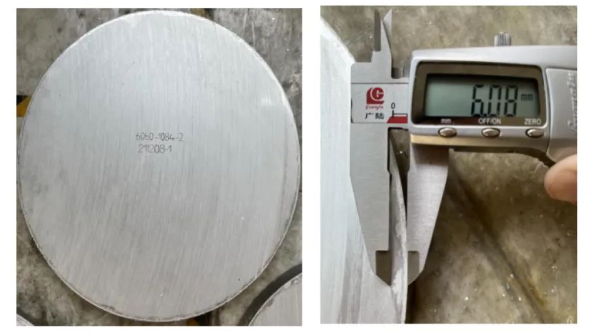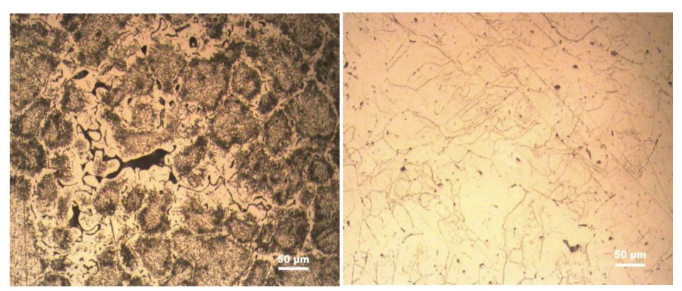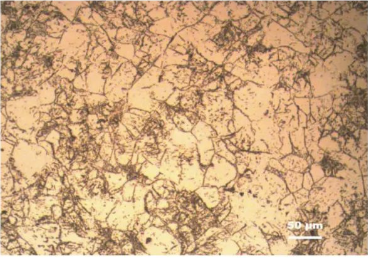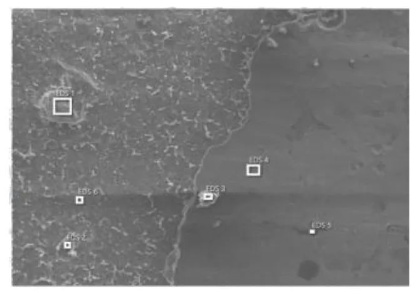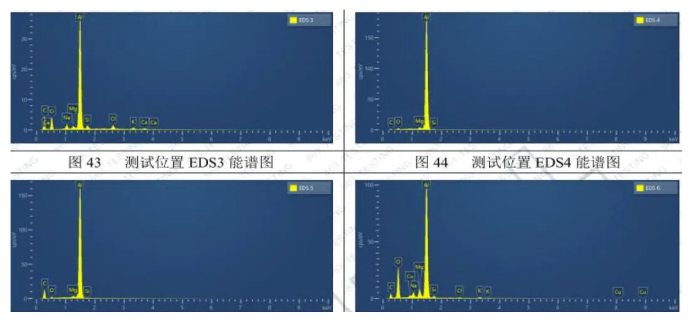1 Description of defect phenomena
When extruding cavity profiles, the head is always scratched, and the defective rate is almost 100%. The typical defective shape of the profile is as follows:
2 Preliminary analysis
2.1 Judging from the location of the defect and the shape of the defect, it is delamination and peeling.
2.2 Cause: Because the skin of the previous casting rod was rolled into the mold cavity, mismatch, peeling, and rotten material appeared at the extrusion head of the next casting rod.
3 Detection and analysis
Electron microscope scans of low magnification, high magnification and cross-sectional defects of the casting rod were carried out respectively.
3.1 Casting rod low magnification
11 inch 6060 casting rod low magnification Surface segregation 6.08mm
3.2 Casting rod high magnification
Close to the epidermis Segregation layer dividing line location
Casting rod 1/2 position
3.3 Electron microscope scanning of defects
Magnify the defect location 200 times
Energy spectrum diagram
EDS component analysis
4 Brief description of analysis results
4.1 A 6mm thick segregation layer appears on the low-magnification surface of the casting rod. The segregation is a low-melting-point eutectic, caused by undercooling of casting. The macroscopic appearance is white and shiny, and the boundary with the matrix is clear;
4.2 High magnification shows that there are pores on the edge of the casting rod, indicating that the cooling intensity is too high and the aluminum liquid is not fed enough. At the interface between the segregation layer and the matrix, the second phase is very rare and discontinuous, which is a solute-poor area. The diameter of the casting rod is 1/2 The presence of dendrites at the location and the uneven distribution of components further illustrates the segregation of the surface layer and the conditions for the directional growth of dendrites;
4.3 Photo of the cross-sectional defect in the 200x field of view of an electron microscope scan shows that the surface is rough where the skin is peeling, and the surface is smooth where the skin is not peeling. After EDS composition analysis, points 1, 2, 3, and 6 are the defect locations, and the composition contains C1 , K, and Na are three elements, indicating that there is a refining agent component in the composition;
4.4 The C and 0 components in the components at points 1, 2, and 6 are higher, and the Mg, Si, Cu, and Fe components at point 2 are much higher than those at points 1 and 6, indicating that the composition of the defect location is uneven and there are surface impurities involved;
4.5 Conducted component analysis on points 2 and 3 and found that the components contained Ca element, indicating that talcum powder may have been involved in the surface of the aluminum rod during the casting process.
5 Summary
After the above analysis, it can be seen that due to the presence of segregation, refining agent, talcum powder and slag inclusions on the surface of the aluminum rod, the composition is uneven, and the skin is rolled into the mold cavity during extrusion, causing a peeling defect on the head. By lowering the temperature of the casting rod and thickening the residual thickness, the peeling and crushing problems can be reduced or even solved; the most effective measure is to add a peeling machine for peeling and extrusion.
Edited by May Jiang from MAT Aluminum
Post time: Jun-12-2024



